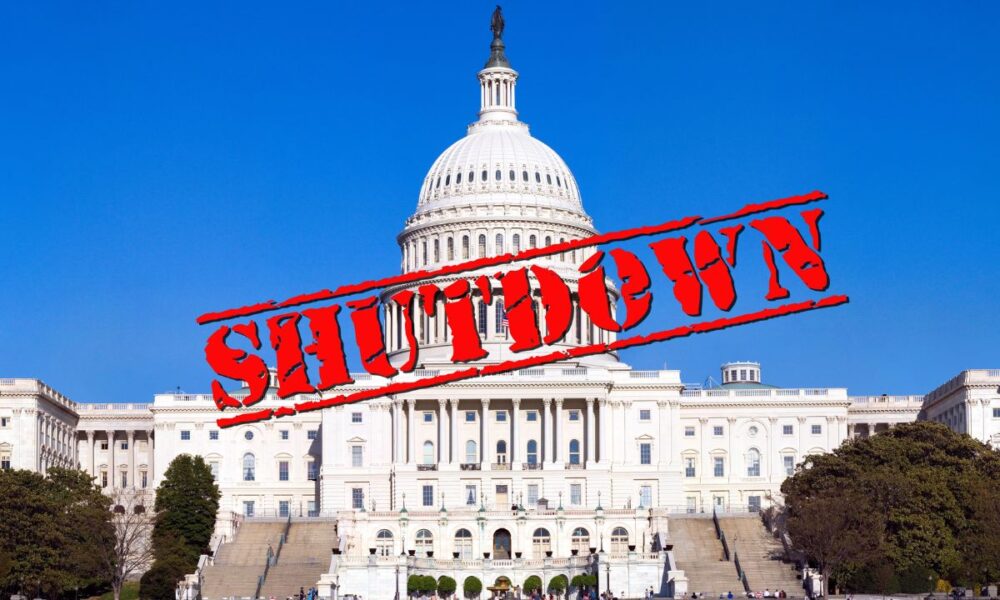The federal government shutdown is set to become the longest in United States history, as of Wednesday, surpassing the 35-day record set during President Donald Trump’s first term, as lawmakers again fail to reach a funding agreement.
For the 14th time, the Senate failed to pass a short-term funding measure on Tuesday, thereby preventing the government from reopening.
The stalemate comes as millions of Americans are beginning to feel the tangible effects of federal agencies either closed or operating with minimal staff. The Trump administration has announced that it will issue only partial Supplemental Nutrition Assistance Program (SNAP) payments this month, following a judge’s order, which raises uncertainty for more than 40 million Americans who rely on the benefit for food assistance.
Flight delays at airports in Texas have increased, and hundreds of thousands of federal workers and contractors continue to go without pay.
“There are no winners in a government shutdown,” said Senate Majority Leader John Thune, a Republican from South Dakota, according to USA Today. “But there are plenty of losers.”
While lawmakers in both chambers have discussed a potential framework to resolve the impasse, particularly around the health care subsidies that have been a central point of disagreement, no final deal has emerged.
A bipartisan group of House members released a proposal on November 3 to extend certain expiring health insurance tax credits for two years and add guardrails against fraud. However, it is unclear whether the Senate will support the measure.
President Donald Trump invited Republican senators to the White House on Wednesday for discussions, urging lawmakers to consider eliminating the filibuster to allow a Republican-backed funding measure to pass with a simple majority, rather than the usual 60-vote threshold. Thune said Tuesday that “the votes aren’t there” to remove the filibuster.
The history of shutdowns in the United States stretches back to the late 20th century, though early shutdowns differed significantly from the current situation.
The first occurred in October 1980 under President Jimmy Carter and affected only the Federal Trade Commission. It followed a legal interpretation from the attorney general that government agencies could not operate without appropriations except for activities necessary to protect “life and property.”
At the time, media coverage appeared comparatively subdued.
While the federal government was preparing to halt operations, “the average American may not notice if that gigantic bureaucracy grinds to a halt,” noting that mail delivery, military operations, and Social Security payments would continue, the Associated Press reported on September 30, 1980.
Shutdowns did not stretch longer than a week until the standoff between President Bill Clinton and congressional Republicans in late 1995 and early 1996. That shutdown lasted 21 days and contributed to substantial backlogs, including long delays for U.S. visas abroad. A report at the time described a U.S. Embassy resuming visa operations after weeks and receiving more than double the usual daily number of applicants within hours.
Economic aftershocks have been documented following past shutdowns.
In January 1996, Democrat Rep. Jim Moran of Virginia warned that approximately 50,000 federal contractors had suffered “irreversible financial losses” during the shutdown and urged Congress to “return government to complete functioning capacity.”
The current shutdown, unlike earlier ones, affects nearly all federal agencies simultaneously, including those with national security, economic oversight, and regulatory responsibilities. The longer it continues, the more public services, payments, and programs are expected to feel its strain.
Lawmakers have suggested that any resolution could involve moving the current funding deadline from November 21 to a new date, possibly in early 2026, to allow time for full-year spending negotiations. But that proposal remains unsettled.
For now, the shutdown’s record-setting duration stands as a testament to the depth of the political divide and to the growing impact on everyday life for Americans nationwide.
Each archival report used in this story was obtained through the LexisNexis database.


